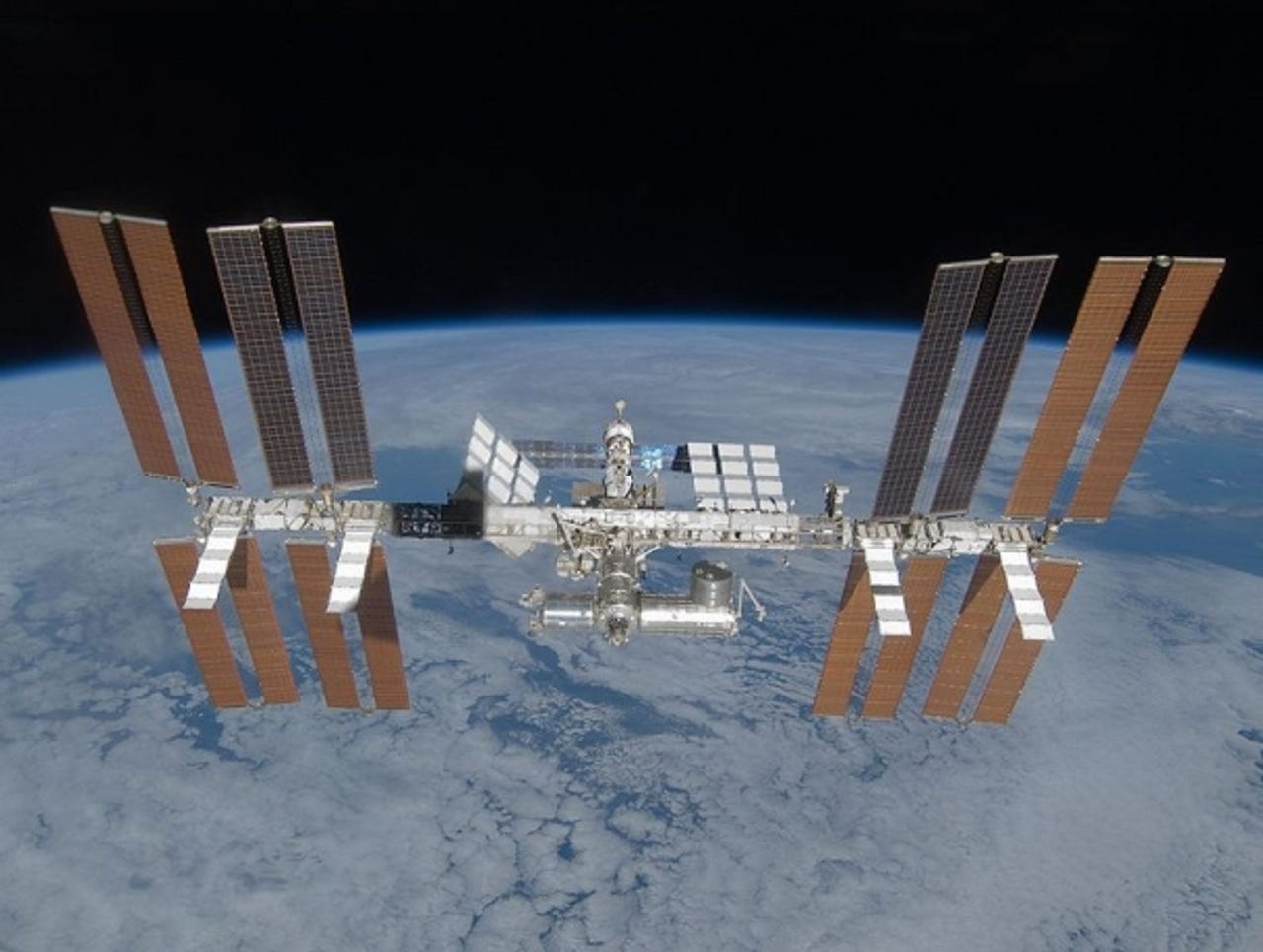Heroic tech: Ten awe-inspiring bits of kit

Transatlantic telegraph cable
Modern tech devices are often lauded for their innovation and shiny veneer. But what about the kind of tech that flies across interstellar distances, withstands subsea pressures, or makes the internet work? ZDNet UK salutes some of the most awe-inspiring bits of kit that nobly goes where no other tech dares to venture — and keeps our world ticking.
The transatlantic telegraph cable
This wire is so amazing that it features in Constantino Brumidi's fresco in the Oculus of the Rotunda of the US Capitol building. It was the first cable laid across the floor of the Atlantic Ocean, used for telegraph communications and transformed the speed of messaging from days — by ship — to minutes.
The copper, latex and iron cable took nine years to lay, and required herculean efforts by Isambard Kingdom Brunel's ship the SS Great Eastern and its captain Sir James Anderson. When complete, it crossed from Telegraph Field in Ireland to Heart's Content in eastern Newfoundland.
The Bombe
The Bombe
Everybody knows about the Enigma Machine, the fiendishly clever encryption device used by the Germans to encode their military communications, but flawed enough to allow the Allies to crack the code. Fewer have heard of the Bombe, an electromechanical device designed by Alan Turing and Gordon Welchman to help decrypt Enigma transmissions by simulating all of its possible settings. The British bombes, which were based on pioneering Polish cryptographic work, were made by the British Tabulating Machine Company for use at Bletchley Park and other sites.
Over 150 bombes were made, and many were destroyed after the war. This one is a rebuild. Historians have judged that the cryptographic work undertaken at Bletchley Park shortened the second world war by between two and four years.
Voyager 1
Voyager 1
Voyager 1 was launched in 1977, along with its partner craft Voyager 2, to explore the giant planets of the solar system and beyond. It was the first probe to send back detailed images of Jupiter and Saturn. As of September 2010, it was 17.1 billion kilometres from the Sun — the most distant man-made object in space — and is still receiving commands from Mission Control. It also contains a Golden Record, with recordings of the sounds of life on Earth, and diagrams that any passing aliens can use to build a record player.
Mars robots
Mars robots
The Red Planet has long fascinated humankind, but so far only robots have made the long journey. They have taken photos, analysed soil samples in search of microbes and (so far) undermined all of our fantasies about life on other planets. Two Nasa rovers, Spirit and Opportunity, are currently beaming back data from planet's surface.
Many robots — 50 percent of all launches from Earth — don't survive to tell their tales, in a phenomenon scientists have dubbed the Mars Curse. For example, Britain's ill-fated Beagle 2 (replica pictured here) was successfully launched from the Mars Express mothership, but contact was lost shortly afterwards.
The Hubble Space Telescope
The Hubble Space Telescope
Earth-based astronomy has its disadvantages, notably light pollution by humans and the distorting, light-blocking presence of the atmosphere. Enter the Hubble Space Telescope in 1990. The Hubble hardware itself isn't that eye-catching, but the images it sends back are spectacular and have transformed the way we view the universe.
Take this image of Formalhaut, for example. A scientist would tell you that it's a class-A Vega-like star approximately 25 light-years from Earth, emitting excess infrared radiation, which indicates that it is surrounded by a circumstellar disc. Because of Hubble, we know exactly what that looks like: the sinister eye of Sauron glaring balefully down upon us.

The International Space Station
The International Space Station
The European Space Agency (ESA) has estimated the cost of the International Space Station (ISS) at €100bn over 30 years. This truly heroic figure makes the station the most expensive object ever constructed, by some reckonings. It's the largest artificial satellite ever to have orbited the Earth, is approximately the size of a football pitch and can be seen from the ground with the naked eye.
The ISS has maintained the longest uninterrupted human presence in space since 31 October 2000 — a total of more than 10 years, surpassing the previous record set by Russian space station Mir of 3,644 days. It is operated by five different space agencies: Nasa, the ESA, the Russian Federal Space Agency, the Japan Aerospace Exploration Agency and the Canadian Space Agency. What's more, it has provided answers to such life-affirming questions as: "Is it really true that microgravity makes you prefer spicy food?" (Yes: prolonged microgravity muffles tastebuds).
The internet's core routers
The internet's core routers
The developed world could not function without internet access, so we all owe a round of applause to the core routers that keep the packets flowing along the internet's backbone. These are the largest and most powerful routers currently available — the juggernauts of the information superhighway — from companies like Juniper Networks and Cisco. They even look big and impressive, like this beast from Cisco, the CRS-1.
At the moment, the internet's core link speed is 10Gbps, with a few links at 40Gbps. By contrast, back in 1969 the first core routers on Arpanet had links of up to 56Kbps. Things have moved on somewhat.
DNS root name servers
DNS root name servers
There are 13 DNS root name server clusters around the world, supplying the root name serving needs of the entire internet. They're the first step in translating human-readable web addresses — the ones we can read — into the numeric IP addresses that make the global communications infrastructure go round.
The particular machine pictured here is a Cisco 7301 router that's part of the AMS-IX mirror of the K-root server. As a critical part of the internet's infrastructure, these nodes have come under attack several times — notably in 2002 and 2007. So far, however, no attack has ever had a serious impact on the internet's performance. Long may that continue.
Nuclear snake-arm robot
Nuclear snake-arm robot
'Snake-arm robot' is a generic term for a flexible manipulator — the type pictured is actually known as an 'elephant's trunk' robot, built by Clemson University's Mechatronics Department.
These machines are widely used in the nuclear industry, allowing inspection, repair and decommissioning to happen in these dangerous environments with minimal risk to human beings. OC Robotics' products are a good example of how they're used. For instance, in 2004 the company supplied five snake-arm robots that were used to complete an urgent pipe replacement in an extremely awkward area beneath one of the reactors in Sweden's Ringhals nuclear power plant. Good work, snake-arm robots.
The Thames Barrier
The Thames Barrier
These movable flood barriers may resemble a row of floating, partly disassembled chrome toasters, but the 10 steel gates, each weighing 3,300 tonnes, save London from disaster during exceptionally high tides or storm surges. The 520m flood defence spans the river near Woolwich. The barrier, built in 1982, was closed four times in the 1980s, 35 times in the '90s and 75 times so far this century. Even taking into account rising sea levels, it's expected to remain keep London flood-free until 2060-2070.